This page contains information on some of the visualization techniques being employed by the Communications Research Group at the University of Nottingham.
We refer to the generated visualizations as Populated Information Terrains (PITS) to reflect the the fact that a key feature of this work is that these visualizations are intended to be multi-user applications in which the users are explicity embodied in the virtual environment and are thus visible to each other.
We have identified four approaches to generating the visualizations, each applicable to different types of data:
An example of this approach is VR-VIBE, developed at Nottingham. This extends the VIBE approach into three dimensions and creates visualizations of bibliographies. Users specify keywords that they wish to use to generate the visualization and place these keywords in 3D-space. Representations of the documents are then displayed in the space according to how relevant each document is to each of the keywords (this relevance is computed by searching the documents for the keywords specified by the user and recording the number of matches). The position of a document depends on the relative importance of each of the keywords to it; thus a document equally spaced between two keywords is equally relevant to both, while a document close to a particular keyword is relevant to that keyword only. Absolute relevance is depicted by the colour of the documents representation, the more relevance the document, the brighter the colour - this is necessary to distinguish between documents that are equally only slightly relevevant from documents which are highly relevant but are placed in the position because the proportion of their relevance to each keyword is the same.
The following image shows an example VR-VIBE visualization of a CSCW bibliograpy containing 1581 entries and five keywords, also visible are some other users browsing the information space. The position of the keywords are marked by octahedrons, with the text drawn alongside. Only documents with an absolute relevance greater than specified threshold are displayed allowing the user to filter out less relevant documents. A 3D scrollbar, visible to the left of figure 2 allows the values of the relevance threshold to be varied.
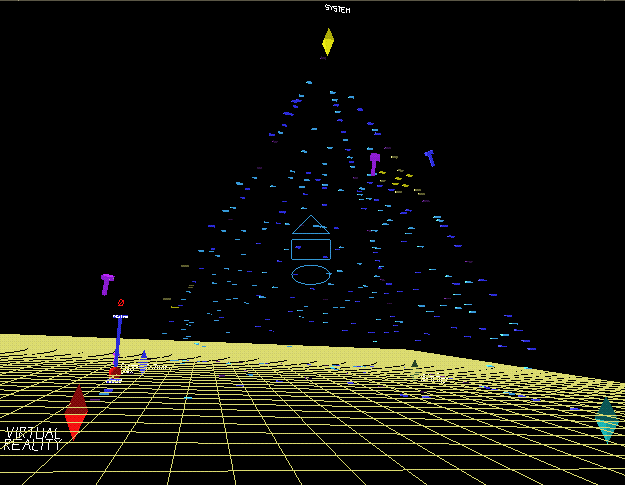
This image shows the same visualization from a different viewpoint. More information about VR-VIBE and some more screen shots of it in use are available.
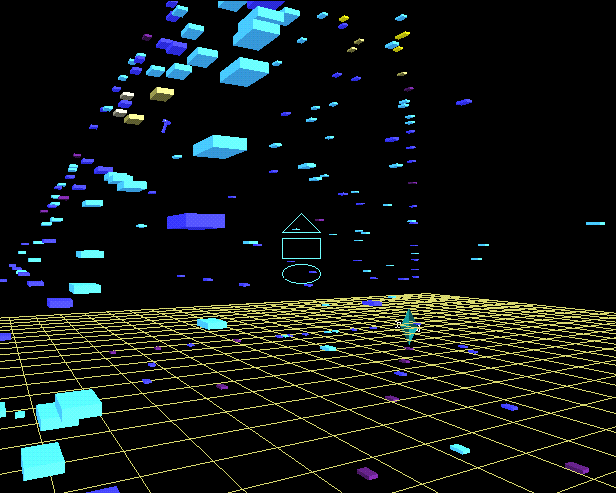
This image shows a visualization of part of a UNIX filestore as a cone-tree, illustrating the hyper-structure approach.
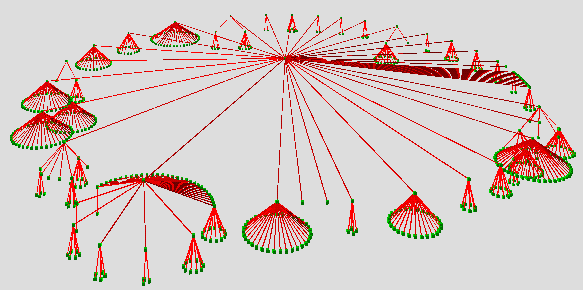
Another approach that we are using to visualizer hyper-structures is known as "Force Directed Placement". In this approach links between nodes are treated as spring forces. The nodes are initially placed either randomly or with some nodes in specified locations and then the forces between nodes are simulated. This has the effect or bringing connected nodes into proximity with one another. A repulsive force between nodes ensures that nodes do not become so close as to make the visualization too dense.
This image shows a visualization of structure with 213 nodes.
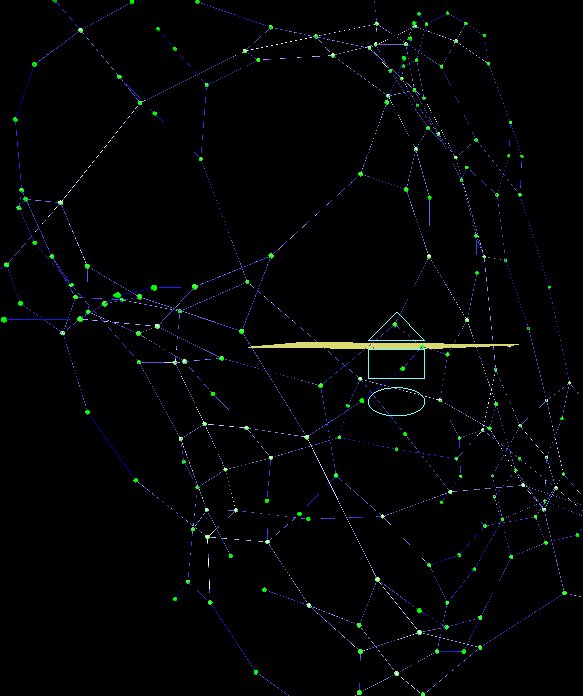
This image demonstrates the sort of visualization produced when a hierarchical structure is visualized
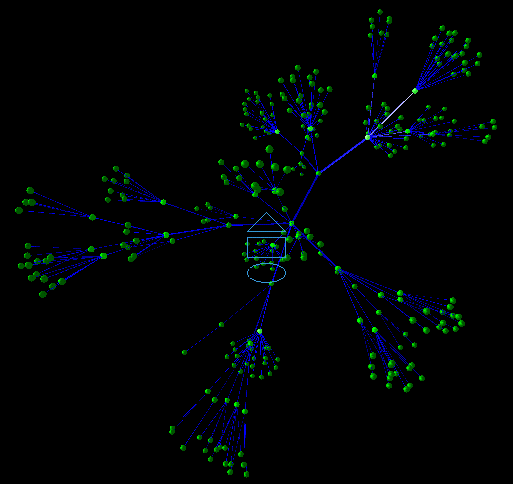
The following are links to related pages:
![[home]](images/home-btn-s.gif) Department of Computer Science
Department of Computer Science![[home]](images/home-btn-s.gif) University of Nottingham
University of Nottingham